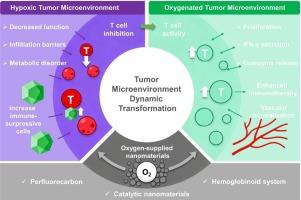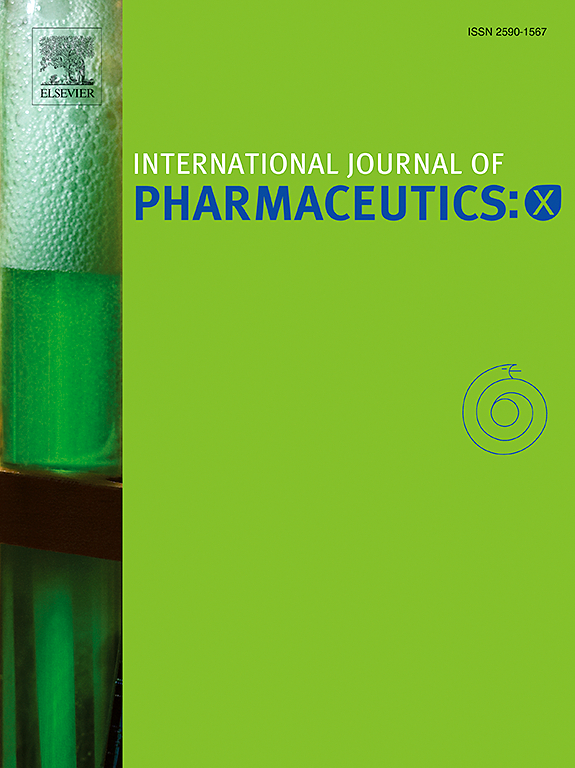Breaking hypoxic barrier: Oxygen-supplied nanomaterials for enhanced T cell-mediated tumor immunotherapy
IF 6.4
2区 医学
Q1 PHARMACOLOGY & PHARMACY
引用次数: 0
Abstract
Hypoxia in the tumor microenvironment (TME) is a critical barrier to effective cancer immunotherapy, as it suppresses T cell infiltration and response while fostering immune evasion. Oxygen-supplied nanomaterials (OSNs) have recently emerged as promising tools to alleviate hypoxia, modulate the TME, and enhance the efficacy of immunotherapies. This review explores the synergistic interplay between OSNs and T lymphocytes in overcoming hypoxia-driven immune suppression. We discuss the mechanisms by which hypoxia limits T cell functionality, infiltration, and cytotoxicity, and highlight how nanomaterials restore oxygenation, boost immune activation, and improve chemokine-mediated T cell recruitment. Key advances in nanotechnology, including perfluorocarbon-based systems and catalytic nanoparticles, are evaluated for their ability to improve anti-tumor immunity and synergize with immune checkpoint inhibitors and chimeric antigen receptor-T cell therapies. Finally, we address the challenges of nanomaterial delivery, safety, and clinical translation, emphasizing opportunities for personalized strategies. OSNs offer transformative potential to enhance T cell-mediated anti-tumor responses, advancing immunotherapy's frontier.

打破缺氧屏障:用于增强T细胞介导的肿瘤免疫治疗的供氧纳米材料
肿瘤微环境(TME)中的缺氧是有效的癌症免疫治疗的关键障碍,因为它抑制T细胞的浸润和反应,同时促进免疫逃避。供氧纳米材料(OSNs)最近成为缓解缺氧、调节TME和提高免疫治疗效果的有前途的工具。本文综述了osn和T淋巴细胞在克服缺氧驱动的免疫抑制中的协同相互作用。我们讨论了缺氧限制T细胞功能、浸润和细胞毒性的机制,并强调了纳米材料如何恢复氧合、促进免疫激活和改善趋化因子介导的T细胞募集。纳米技术的主要进展,包括基于全氟碳化合物的系统和催化纳米颗粒,因其提高抗肿瘤免疫和与免疫检查点抑制剂和嵌合抗原受体-t细胞疗法协同作用的能力而得到评估。最后,我们讨论了纳米材料递送、安全性和临床翻译方面的挑战,强调了个性化策略的机会。osn具有变革性潜力,可增强T细胞介导的抗肿瘤反应,推进免疫治疗的前沿。
本文章由计算机程序翻译,如有差异,请以英文原文为准。
求助全文
约1分钟内获得全文
求助全文
来源期刊

International Journal of Pharmaceutics: X
Pharmacology, Toxicology and Pharmaceutics-Pharmaceutical Science
CiteScore
6.60
自引率
0.00%
发文量
32
审稿时长
24 days
期刊介绍:
International Journal of Pharmaceutics: X offers authors with high-quality research who want to publish in a gold open access journal the opportunity to make their work immediately, permanently, and freely accessible.
International Journal of Pharmaceutics: X authors will pay an article publishing charge (APC), have a choice of license options, and retain copyright. Please check the APC here. The journal is indexed in SCOPUS, PUBMED, PMC and DOAJ.
The International Journal of Pharmaceutics is the second most cited journal in the "Pharmacy & Pharmacology" category out of 358 journals, being the true home for pharmaceutical scientists concerned with the physical, chemical and biological properties of devices and delivery systems for drugs, vaccines and biologicals, including their design, manufacture and evaluation. This includes evaluation of the properties of drugs, excipients such as surfactants and polymers and novel materials. The journal has special sections on pharmaceutical nanotechnology and personalized medicines, and publishes research papers, reviews, commentaries and letters to the editor as well as special issues.
 求助内容:
求助内容: 应助结果提醒方式:
应助结果提醒方式:


